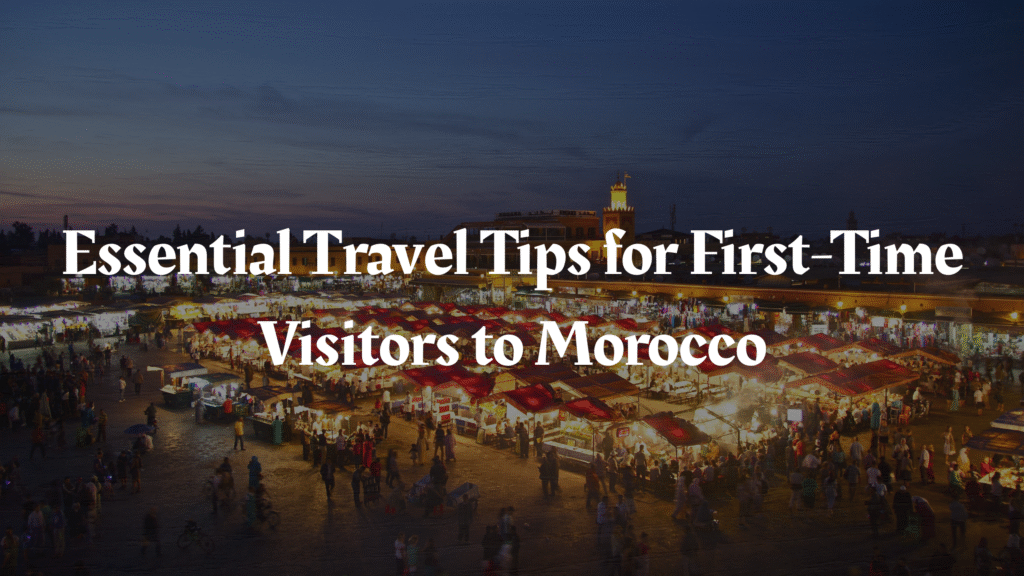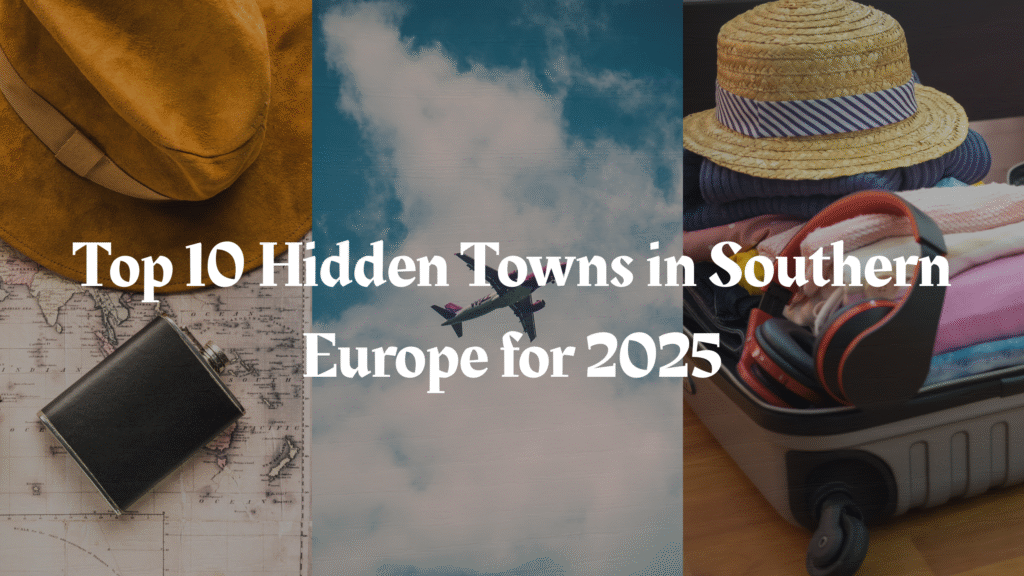Embarking on your journey to Morocco is an exciting adventure filled with rich culture, remarkable customs, and stunning landscapes. This vibrant country is a tapestry of traditions and modern influences, making it a must-visit destination for any traveler. In this guide, you’ll discover essential travel tips Morocco to ensure your trip is unforgettable. From understanding local customs to uncovering hidden gems, these insights will enhance your Morocco experiences. So, pack your bags and get ready to navigate the enchanting world of Moroccan culture!

Understanding Moroccan Culture
Moroccan culture is a blend of various influences, encompassing Arab, Berber, and French traditions, creating a unique tapestry of experiences for visitors. The heritage of Morocco shines through in its music, art, architecture, and vibrant festivals. Engaging with these cultural elements offers a deeper appreciation for the country’s rich history and diversity. Furthermore, understanding the Moroccan language can significantly enhance your travel experience by facilitating meaningful interactions with locals.
Key Elements of Moroccan Heritage
The heritage of Morocco boasts several key elements that define its cultural landscape. Among these are:
- Music: Traditional genres like Gnawa and Chaabi reflect the country’s diverse roots.
- Art: Intricate tilework and calligraphy are prevalent in local handicrafts.
- Architecture: The stunning riads and historical medinas showcase beautiful designs.
- Festivals: Events like the Fez Festival of World Sacred Music draw international attention.
Language and Communication Tips
In Morocco, the primary languages spoken are Arabic and Berber, with French widely used in urban areas and for business. Familiarizing yourself with basic phrases in the Moroccan language can improve your interactions. A few useful phrases include:
- Salam alaykum – Peace be upon you (a common greeting).
- Shukran – Thank you.
- Laflaras – Excuse me.
Using these phrases shows respect for the local culture and creates a welcoming environment. Embracing the nuances of Moroccan culture will not only deepen your travel experience but also foster connections with the people you meet.
Essential Travel Tips for First-Time Visitors
Preparing for your adventure in Morocco requires careful planning and consideration. Knowing what to pack and securing proper travel insurance are crucial steps that can enhance your experience. Referencing a comprehensive packing list Morocco can make a significant difference in ensuring you have everything you need for a smooth trip.
What to Pack for Your Trip
Your packing list Morocco should be tailored to the climate and activities you plan to engage in. Consider the following essential items:
- Comfortable footwear for exploring vibrant streets and markets.
- Modest clothing that respects local customs.
- Sunscreen to protect against the strong sun.
- A power adapter suitable for Moroccan outlets.
- A reusable water bottle to stay hydrated.
Bringing these items will ensure you enjoy your travels, whether you’re wandering through ancient medinas or relaxing in the desert.
Travel Insurance: Why You Need It
Securing travel insurance Morocco is a vital step before embarking on your trip. This coverage safeguards against unforeseen events such as illness, trip cancellations, or lost luggage. Having travel insurance allows you to enjoy your travels with peace of mind, knowing that support is available should anything unexpected occur.
When considering your travel tips, remember that keeping your health and belongings secure enhances your overall Moroccan experience. Taking these preparations seriously ensures you can fully immerse yourself in the beautiful culture and stunning landscapes this country has to offer.
Travel to Morocco: Navigating the Landscape
Exploring Morocco’s diverse landscapes is an adventure that begins with understanding your transportation options. With a variety of ways to travel around the country, you can choose what best fits your preferences. Here is some helpful travel advice Morocco to guide you through these options, ensuring your journey is as smooth and enjoyable as possible.
Transportation Options within Morocco
Morocco offers several means of transportation, including buses, trains, taxis, and domestic flights. Each method has its unique advantages and drawbacks, making it important to consider your travel needs.
- Buses: A budget-friendly choice, buses connect major cities and towns. Companies like CTM offer reliable service, although comfort might vary.
- Trains: The train network in Morocco is efficient and comfortable, particularly on the route from Casablanca to Marrakech. Trains are often the most scenic option.
- Taxis: Grand taxis serve as shared transport between cities, while petite taxis operate within cities. Make sure to agree on a fare before starting your trip.
- Domestic flights: For quicker travel between distant locations, consider flying. This option saves time but may come at a higher cost.
Best Times to Visit Morocco
Planning your trip around the best time to go can enhance your experience in Morocco. Generally, the ideal months for visiting are during spring (March to May) and fall (September to November). The weather is pleasant, perfect for outdoor activities and exploring local attractions. Summer can be quite hot, especially in desert regions, while winter offers a unique perspective with snow-capped mountains in the Atlas range. Be mindful of local festivals when planning your trip, as these events can add cultural richness to your visit.
| Transportation Method | Pros | Cons |
|---|---|---|
| Buses | Budget-friendly, wide coverage | Comfort varies |
| Trains | Efficient, comfortable, scenic | Limited routes |
| Taxis | Convenient for short distances | Fare negotiation needed |
| Domestic flights | Fast travel between major cities | Higher costs |
Customs and Etiquette in Morocco
Understanding the intricacies of Moroccan customs and etiquette in Morocco is essential for an enriching travel experience. Visitors should recognize the significance of greetings and social interactions, alongside the important dining practices in Morocco that embody hospitality and cultural values.
Greeting Practices and Social Norms
When meeting someone in Morocco, a handshake is customary. This friendly gesture typically involves a firm grip, followed by a light touch of the heart. It symbolizes respect and connection. Personal space might differ from what you’re used to, so it’s common for people to stand close while conversing. In larger gatherings, you may notice the practice of exchanging pleasantries among multiple individuals, which emphasizes community and rapport.
Dining Etiquette: Breaking Bread in Morocco
Dining practices in Morocco reflect deep-rooted traditions and communal values. It’s customary to eat with your right hand, as the left hand is considered impolite for such activities. Meals are often enjoyed together, emphasizing a sense of shared experience. When in a Moroccan home, you may be invited to eat from a communal plate, which reinforces the bond among diners. Remember to express appreciation for the meal, as compliments to the host showcase respect and gratitude. Participating in these dining practices enhances your engagement with Moroccan culture.
Local Secrets for Authentic Experiences
Exploring the vibrant culture of Morocco provides a gateway to authentic Moroccan experiences that truly showcase the heart of this fascinating country. When you venture into its lively markets and hidden corners, you not only discover unique treasures but also engage with the local way of life. If you want to maximize your adventure and uncover the real Morocco, consider immersing yourself in shopping in Morocco’s bustling souks and seeking out hidden gems Morocco has to offer.
Markets and Souks: Shopping Like a Local
Wandering through local markets, known as souks, offers a sensory delight filled with colorful textiles, fragrant spices, and intricate handicrafts. These bustling hubs are the perfect venues for shopping in Morocco, where you can negotiate prices and connect with artisans directly. Here are some tips to enhance your souk experience:
- Haggle: Don’t hesitate to negotiate. It’s a common practice that adds to the fun and helps you get a fair deal.
- Engage: Take time to chat with shopkeepers. They often have stories about their crafts that can deepen your understanding and appreciation.
- Be Curious: Explore different stalls, as each shop offers something unique. Look for handmade goods like pottery, textiles, or leather products.
Hidden Gems Off the Beaten Path
Beyond the famous tourist sites, Morocco is rich in hidden gems waiting to be explored. Venture to lesser-known attractions that provide a glimpse into the tranquil side of Moroccan life. Some of these hidden gems Morocco showcases include:
- Chefchaouen: Known for its stunning blue buildings, this mountain town offers breathtaking views and a relaxed atmosphere.
- Oasis of Fint: Just outside of Ouarzazate, this serene oasis features lush palm trees framing picturesque landscapes, perfect for a quiet getaway.
- Essaouira’s Medina: Walk through the less-traveled alleys of this coastal city, where you can appreciate its unique architecture and engage with local artists.
By prioritizing authentic Moroccan experiences, you will create memories that extend far beyond shopping in Morocco’s vibrant markets and exploring its hidden wonders. Engaging fully with the local culture will enrich your travels and provide a deeper connection to this enchanting country.
Exploring Moroccan Cuisine
Moroccan cuisine offers a delightful journey through rich flavors and diverse dishes, deeply rooted in the country’s cultural heritage. Your culinary adventure in Morocco will unveil a spectrum of must-try dishes and vibrant street food options that capture the essence of this beautiful nation.
Must-Try Dishes and Street Food
As you explore street food Morocco, you’ll encounter iconic dishes that embody the artistry of Moroccan cooking. Notable options include:
- Tagine – A slow-cooked stew made in a conical earthenware pot, featuring ingredients such as lamb, chicken, vegetables, and a blend of spices.
- Couscous – Often referred to as the national dish, this steamed semolina dish is traditionally served with a flavorful broth and various toppings.
- Pastilla – A savory-sweet pie made with layers of flaky pastry, spiced meat (usually pigeon or chicken), and a dusting of powdered sugar and cinnamon.
- Harira – A hearty soup often enjoyed during Ramadan, made with tomatoes, lentils, chickpeas, and spices.
- Kebabs – Grilled skewers of meat, seasoned and cooked to perfection, often served with fresh bread or salads.
Understanding Moroccan Dining Customs
Dining customs in Morocco enhance your culinary experience. Shared meals are a common tradition, emphasizing community and connection. Here are a few customs to keep in mind:
- Meals typically revolve around the family table, where everyone shares dishes.
- It’s customary to wash your hands before eating, reflecting respect and cleanliness.
- Mint tea serves as a gesture of hospitality, often offered to guests as a symbol of welcome.
- Meals are usually enjoyed in a leisurely fashion, allowing time for conversation and bonding.

Embracing these dining customs while indulging in Moroccan cuisine and street food Morocco will create memorable moments and deepen your appreciation for this enchanting culture.
Check out this article about Most famous Street food in Morocco you must try.
Safety Tips for Travelers
Your safety is a primary concern while exploring Morocco. Understanding the landscape of travel safety will enhance your experience and help you navigate common challenges. It’s essential to be aware of various scams in Morocco that can disrupt your journey, such as overpriced tours or aggressive street performers seeking tips. With the right precautions, you can enjoy Morocco while keeping these threats at bay.
Common Scams to Watch Out For
Being informed about potential scams can significantly improve your travel safety. Some common scams include:
- Tour operators offering overpriced packages with hidden fees.
- Street performers demanding money after unsolicited performances.
- Unlicensed guides providing misleading information or pricing.
- Shops charging inflated prices for tourists.
To avoid these scams, always negotiate when possible and seek recommendations for services from trusted sources. Being cautious in unfamiliar situations will go a long way in ensuring a secure visit.
Staying Safe in Crowded Areas
Morocco can be bustling, particularly in markets and busy streets. Maintaining awareness of your surroundings is vital. Here are some practical safety tips Morocco for staying secure in crowded places:
- Keep your valuables secured and out of sight.
- Travel with a friend or in a group whenever possible.
- Stay informed about local customs and etiquette, as this can help you blend in.
- Be cautious of pickpockets, especially in busy areas.
With these strategies in mind, you can minimize risks and focus on enjoying the rich culture and beauty Morocco has to offer.
Accommodation Tips in Morocco
When planning your trip, choosing the right accommodation in Morocco can greatly enhance your experience. Travelers often find themselves debating between the unique charm of a riad vs hotel. Knowing where to stay helps set the stage for your journey, allowing you to immerse yourself in Moroccan culture.
Choosing Between Riads and Hotels
Staying in a riad offers a glimpse into traditional Moroccan life. These beautiful guesthouses feature intricate tile work, lush courtyards, and personalized service, making them a popular choice among travelers who seek authenticity. In contrast, modern hotels provide contemporary amenities and convenience, often located near major attractions.
Here are some key differences to consider:
| Factor | Riad | Hotel |
|---|---|---|
| Aesthetic | Traditional architecture with cultural decor | Modern, often standardized design |
| Experience | Intimate atmosphere, personalized service | More facilities, larger scale |
| Location | Often in historic medinas | Varied locations, sometimes outside city centers |
| Price | Ranges from budget to luxury | Varies widely based on brand and location |
Recommended Areas to Stay
For your accommodation in Morocco, selecting the right area is crucial. Some popular cities and neighborhoods include:
- Marrakech: Consider staying in the medina for proximity to souks and attractions.
- Fes: The Fes el-Bali area offers a rich cultural experience with historical sites just a short walk away.
- Essaouira: Opt for beachfront accommodations or within the old town for a relaxed vibe.

Local Customs You Should Know
Understanding local customs is essential for creating meaningful connections during your visit to Morocco. The nation’s rich cultural backdrop offers a fascinating exploration of traditions, particularly its renowned Moroccan hospitality. This unique characteristic sets the tone for interactions and can enhance your travel experience.
The Importance of Hospitality in Moroccan Culture
Moroccan hospitality is more than just a welcoming gesture; it is a vital aspect of the nation’s identity. Locals take pride in offering their homes to guests, often serving traditional mint tea and snacks as a sign of respect. Engaging in this custom allows you to connect with residents and gain insights into their way of life. Understanding the significance of Moroccan hospitality will help you appreciate the relationships you build during your travels.
Dress Code: What to Wear as a Traveler
Adhering to the dress code Morocco sets ensures that you respect local customs while remaining comfortable. For women, it is advisable to wear modest clothing that covers shoulders and knees, especially in rural areas and religious sites. Men should also consider wearing long trousers and light shirts. When dressing appropriately, you foster goodwill with locals and help create a more enriching experience.
| Gender | Recommended Attire | Occasions |
|---|---|---|
| Women | Long skirts or dresses, long-sleeved tops | Visiting markets, dining in local homes |
| Men | Long trousers, casual shirts | Casual outings, exploring towns |
| Both | Comfortable shoes, light layers | Walking tours, outdoor activities |
Making the Most of Your Itinerary
Crafting a fulfilling itinerary in Morocco involves thoughtfully selecting from the remarkable offerings of this diverse country. With a rich array of landscapes, cultural attractions, and historical sites, you’ll want to include the top destinations Morocco has to offer. From the breathtaking Atlas Mountains to the expansive Sahara Desert, each location presents unique experiences and memories waiting to be made.
Top Destinations for First-Time Visitors
Your travel planning should prioritize key locations that encapsulate Morocco’s beauty and charm. Consider visiting:
- Marrakech – Known for its vibrant souks and stunning palaces.
- Fez – Home to one of the world’s oldest universities and a medina filled with history.
- Chefchaouen – Famous for its blue-washed buildings and scenic mountain backdrop.
- Sahara Desert – Experience the magic of a sunset over the sand dunes.
- Essaouira – A coastal gem with a rich maritime heritage.
Planning Your Daily Schedule
- Prioritize top destinations Morocco to ensure a well-rounded experience.
- Balance your days with both busy and leisure activities to prevent burnout.
- Be open to adjusting plans based on local festivals or events.
- Consider group tours for specific attractions to gain deeper insights.
With this approach, your itinerary Morocco will facilitate unforgettable experiences across the country’s rich landscapes and vibrant cultures.

Conclusion
In summary, this comprehensive guide provides essential insights for your journey into the enchanting realm of Morocco. By delving into key aspects of Moroccan culture, customs, and local secrets, you’re equipped to craft unforgettable experiences as you explore this vibrant country. Understanding these elements is crucial for navigating the rich heritage and diverse landscapes that await you.
From practical Moroccan travel tips to discovering off-the-beaten-path treasures, you are now prepared to embark on an adventure that promises to be both rewarding and illuminating. As you travel to Morocco, look forward to engaging with the warm hospitality of its people while enjoying the breathtaking beauty and unique flavors that define this captivating destination.
So, set your sights on exploring Morocco with confidence and enthusiasm. With the knowledge gained from this guide, your trip is bound to be a memorable one, filled with deep cultural connections and exhilarating discoveries at every turn. Happy travels!
FAQ
What are the best times to visit Morocco?
The best times to visit Morocco are during the spring (March to May) and fall (September to November) when the weather is mild and pleasant. These seasons allow you to explore the landscape and experience local festivals without the intense heat of summer.
What should I pack for a trip to Morocco?
You should pack comfortable footwear for walking, lightweight clothing to stay cool in the heat, and modest outfits to respect local customs. Don’t forget essentials like sunscreen, a hat, and a power adapter to keep your devices charged.
How do I greet someone in Morocco?
A common greeting in Morocco is « Salam Alaikum, » which means « Peace be upon you. » It’s polite to shake hands and maintain eye contact, reflecting respect as you engage with locals.
Is it necessary to have travel insurance for my trip?
Yes, having travel insurance is highly recommended. It protects you from unforeseen events such as trip cancellations, medical emergencies, or lost belongings, ensuring a worry-free travel experience.
Are there any common scams I should be aware of?
Be cautious of individuals offering overpriced tours or unsolicited help in tourist areas. Always negotiate prices before accepting services and be skeptical of deals that seem too good to be true.
What dining customs should I know about?
When dining in Morocco, it’s customary to use your right hand to eat and share dishes communally. Don’t be surprised if you’re offered mint tea as a sign of hospitality; it’s an essential part of the dining experience.
How can I get around in Morocco?
You can navigate Morocco using public transportation options such as buses and trains, or by hiring taxis. For a more immersive experience, consider renting a car to explore at your own pace.
What are some must-try dishes in Moroccan cuisine?
You must try local dishes like tagine, couscous, pastilla, and harira soup. Street food, such as kebabs and fresh fruit, is also popular and delicious, offering a taste of authentic flavors.
What areas are recommended for accommodation?
Staying in riads in cities like Marrakech, Fes, and Essaouira offers a unique blend of comfort and cultural immersion. Each neighborhood has its charm, so consider proximity to attractions when choosing your base.
How should I dress while visiting Morocco?
Dress modestly to respect local customs, especially in rural areas. Women should consider wearing long skirts or pants, and men should avoid shorts. Light fabrics are advisable to stay comfortable in warmer climates.




